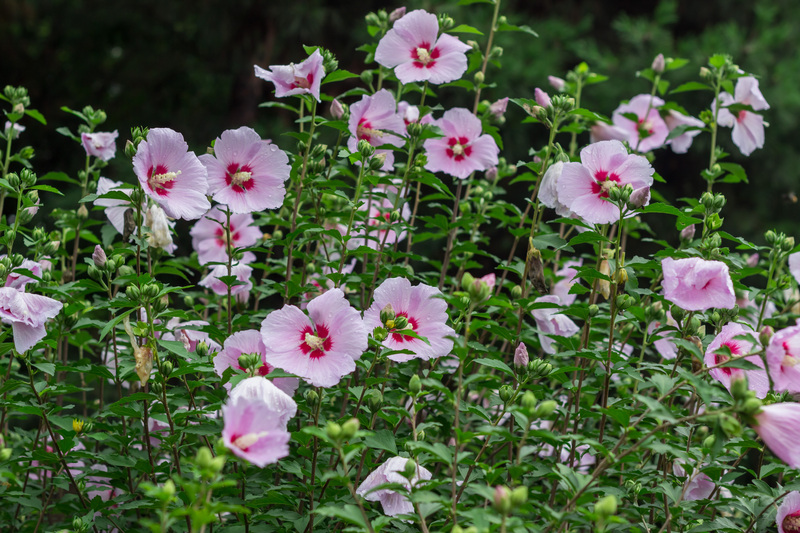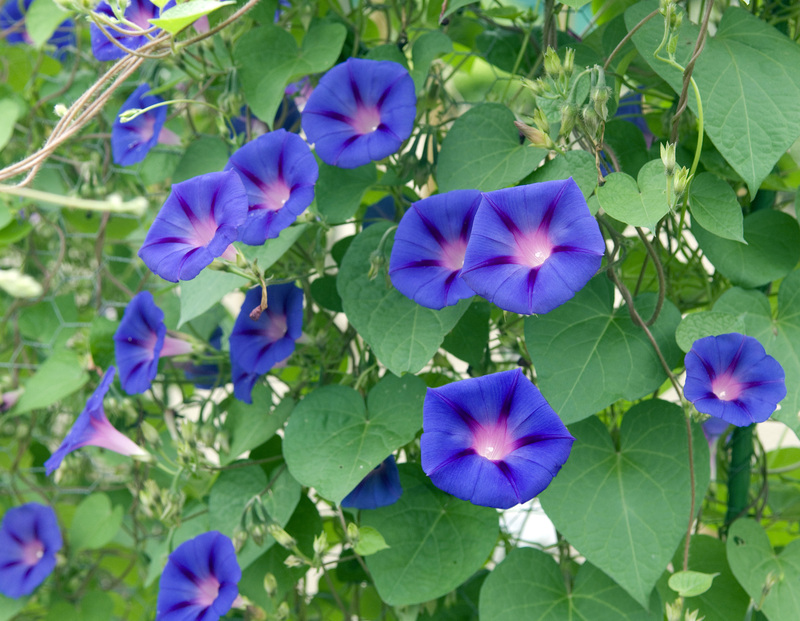Experiment With These Exotic Tropical Plants in Your UK Garden
Transforming your UK garden into a lush, tropical paradise may seem like a dream reserved for far-away rainforests or equatorial islands. However, with climate change influencing weather patterns and gardeners becoming more adventurous, it is now more possible than ever to experiment with exotic tropical plants right here in the UK. By carefully selecting robust, eye-catching species and giving them just a bit of extra care, you can bring a taste of the tropics to your plot. In this comprehensive guide, we'll explore the best tropical and subtropical plants for UK gardens, tips for their care, and how to design a vibrant, exotic outdoor space.

Why Grow Exotic Tropical Plants in the UK?
In recent years, UK gardeners have been embracing bolder designs and plant choices. The allure of experimenting with exotic tropical plants lies not just in their dramatic foliage and vivid flowers, but in the sense of escapism and adventure they bring to gardens. Imagine sitting among giant banana leaves, under the shelter of leafy palms, or surrounded by the jewel hues of canna lilies--right outside your doorstep.
- Climate Adaptation: Many tropical plants can withstand the UK's milder winters, especially with a little protection.
- Biodiversity Boost: Exotic plants can attract pollinators and add diversity to your local ecosystem.
- Stunning Visual Impact: Dramatic shapes and colours instantly elevate any space.
- Garden Conversation Starter: Unique plants spark interest and inspiration among neighbours and guests.
Understanding the Limitations and Potentials
It's important to remember that the UK's unpredictable climate - with chilly winters, cool springs, and often damp conditions - is not naturally suited to many tropical species. That said, a remarkable range of hardy exotics thrive if their plant needs are respected. Others can be grown as annuals or overwintered indoors. Planning, flexibility and some experimentation are key.
Top 10 Exotic Tropical Plants for UK Gardens
If you wish to try out some outstanding tropical and subtropical plants, here's a selection that balances drama, resilience, and beauty for UK gardens.
1. Trachycarpus fortunei (Windmill Palm)
This hardy palm is the go-to choice for UK gardeners craving an authentic tropical look. Its fan-shaped leaves and tough constitution allow it to thrive outdoors even in northern gardens. Young specimens benefit from winter fleece, but mature plants shrug off frost and snow.
- Sunlight: Full sun to partial shade
- Hardiness: Down to -15?C (with some protection when young)
- Soil: Well-drained, moisture-retentive
2. Musa basjoo (Japanese Hardy Banana)
If you long for the bold, giant leaves of banana plants, Musa basjoo is your best bet in the UK. While this banana won't produce edible fruit in British conditions, its lush foliage gives an unmistakably tropical effect. Overwinter by mulching the roots and wrapping the stem with fleece or straw in colder areas.
- Sunlight: Full sun for best growth
- Height: Up to 3 metres with good care
3. Fatsia japonica (Japanese Aralia)
With its exotic, glossy palmate leaves, Fatsia japonica provides a striking, leafy backdrop all year round. This versatile shrub is remarkably tolerant of shade and cold. Its small, creamy white flowers in autumn are also a bonus for pollinators.
- Sunlight: Semi-shade to deep shade
- Benefits: Evergreen, architectural, easy to grow
4. Canna indica (Canna Lily)
Cannas offer flamboyant colour from mid-summer into autumn, with bold paddle-shaped leaves and dramatic red, orange, or yellow blooms. They prefer a sunny, sheltered position and moist, fertile soil. In colder regions, lift rhizomes in autumn and store frost-free until spring.
- Sunlight: Full sun
- Care: Lift and store bulbs during winter
5. Colocasia (Elephant Ear)
Want the ultimate statement plant? Colocasia produces immense, heart-shaped leaves that can measure over a metre in length. Give it a warm, humid spot and plenty of water during the summer; in winter, treat it as a tender perennial and bring it indoors or overwinter tubers.
- Sunlight: Dappled shade or full sun with humidity
- Water: Regular moisture required
6. Ensete ventricosum 'Maurelii' (Red Abyssinian Banana)
This non-hardy cousin of Musa basjoo features spectacular red-and-green leaves. Grow it as a summer specimen outdoors, and overwinter indoors for use next season. Fertilise well for impressive size and leaf colour.
- Sunlight: Full sun
- Height: 2-3 metres in one season with care
7. Phormium (New Zealand Flax)
Though technically not tropical, Phormium imparts a sharp, architectural edge similar to many exotic plants. Its sword-like, evergreen leaves (in various colours) look striking in pots or among palms and cannas. Very wind and frost-tolerant once established.
- Sunlight: Full sun to partial shade
- Maintenance: Minimal
8. Hedychium (Ginger Lily)
Hedychium species bring extraordinary scent and colour to summer borders. Their lush green leaves and towering flower spikes add a dramatic touch. Overwinter in a sheltered spot or lift rhizomes if frost is severe.
- Sunlight: Sun or partial shade
- Fragrance: Stunningly aromatic blooms
9. Tetrapanax papyrifer 'Rex' (Rice Paper Plant)
For the adventurous, Tetrapanax 'Rex' offers some of the largest, most spectacular leaves in the UK garden--often more than half a metre across! Protect new growth from late frosts, as this plant can be knocked back by cold snaps.
- Sunlight: Full sun to light shade
- Size: Can achieve up to 5 metres in sheltered spots
10. Cordyline australis (Cabbage Tree)
Widely grown for its palm-like appearance, Cordyline australis is a great pick for adding vertical interest to an exotic UK garden. It tolerates wind and salty air, making it ideal for coastal gardens.
- Sunlight: Full sun is best
- Hardiness: To around -8?C, though mature specimens can take lower temperatures
How to Care for Exotic and Tropical Plants in the UK
While experimenting with tropical garden plants in the UK is exciting, success depends on understanding their unique needs and providing tailored care. Here are several key tips to maximize your success:
Choose the Right Microclimate
The warmest, sunniest spot in your garden, such as a south- or west-facing wall, will help many tropical plants thrive. Walls radiate heat and provide shelter, extending the growing season and reducing frost risk.
Improve and Mulch Your Soil
- Add organic matter to improve moisture retention and drainage.
- Mulch in autumn with bark, straw, or compost, especially around tender roots.
Shelter From Wind and Frost
Many exotics can survive short frosts but dislike cold winds, which scorch leaves and stunt growth. Plant near fences or established shrubs for shelter. In winter, protect crowns and roots with horticultural fleece, straw, or mulch.
Feed and Water Well in Summer
- Tropical species are often heavy feeders--use slow-release fertilisers and supplement with liquid feed during peak growing season.
- Most need consistently moist, but not waterlogged, conditions during active growth.
Overwinter Indoors Where Necessary
Some plants (such as ensete bananas and cannas) must be brought indoors before the first frost. Pot them up, cut back excessive growth, and keep in a cool but frost-free place, watering sparingly until spring.
Experiment With Containers
Growing tropicals in pots allows you to position them for maximum effect in summer and easily move them indoors in autumn. Choose large, stable containers and water regularly, as pots dry out quicker than beds.
Design Ideas: Creating a Lush, Tropical Effect
Create visual drama by layering plants of varying heights, textures, and colours. Here are some top tips for designing your own tropical oasis in the UK:
- Layering: Use tall Cordylines, Windmill Palms, and Bananas as the backbone, with mid-level Cannas and Phormiums, and low-growing Fatsias and Colocasias at the front.
- Combine Leaf Shapes: Mix gigantic paddle-shaped leaves with sword-like forms and finely cut foliage for contrast.
- Add Colour: Feature vibrant blooms such as Cannas, Ginger Lilies, or Crocosmias and underplant with colourful bedding like Impatiens or Begonias.
- Water Features: A pond or stream increases humidity and provides the perfect home for moisture-loving exotic plants.
- Hard Landscaping: Use bold materials, such as large stones, pebbles, or bamboo, to reinforce the tropical theme.
- Finishing Touches: Finish with colourful pots, palm print cushions and outdoor lights for a holiday feel.
The Best Tropical Plants for Shady UK Gardens
If you don't have much sun, don't despair--many exotic plants, notably Fatsia japonica, ferns, and Hosta varieties, excel in shade. Japanese Aralia (Fatsia) and Mahonia create a jungle feel, while ferns like Dryopteris and Blechnum add lushness. Supplement with shade-tolerant flowering plants and add architectural accents for drama.
Common Concerns When Growing Exotic and Tropical Plants
Will these plants survive UK winters?
Many listed here are surprisingly hardy, provided they are well-established and receive some winter protection. Always check the plant's hardiness rating and know your local climate. In colder regions, stick to the hardiest species or be ready to overwinter plants inside.
Do tropical plants need lots of watering?
Most like consistent moisture, but avoid waterlogging. Overwatering is as risky as drought. Mulch, group plants together for humidity, and check pots frequently in hot weather.
How long before I see a 'jungle' effect?
Within just one or two summers, fast-growers like Cannas, Bananas, and Tetrapanax will make a big impact. The tropical effect is quick to achieve if you start with healthy, well-grown plants and use plenty of organic fertiliser and water.

Where to Buy Exotic and Tropical Plants in the UK
Many garden centres now offer a range of hardy exotics. For rare or specialist varieties, try:
- Specialist tropical plant nurseries
- Royal Horticultural Society members' plant sales
- Mail order from trusted online exotic plant suppliers
- Local plant swaps and open garden events
Conclusion: Make Your UK Garden Stand Out With Exotic Tropical Plants
Experimenting with exotic tropical plants in your UK garden opens up a whole new world of colour, form, and garden design possibilities. With a little extra care and adventurous spirit, you can create a rainfall-rich garden sanctuary that feels transported from a faraway paradise--while surprising yourself with what is possible in the British climate! Start small, learn as you go, and soon you'll reap the rewards of a vibrant, lush, and totally unique exotic garden.
Embrace the challenge--your UK garden could soon be the envy of all who see it, bursting with the dramatic appeal of the tropics!